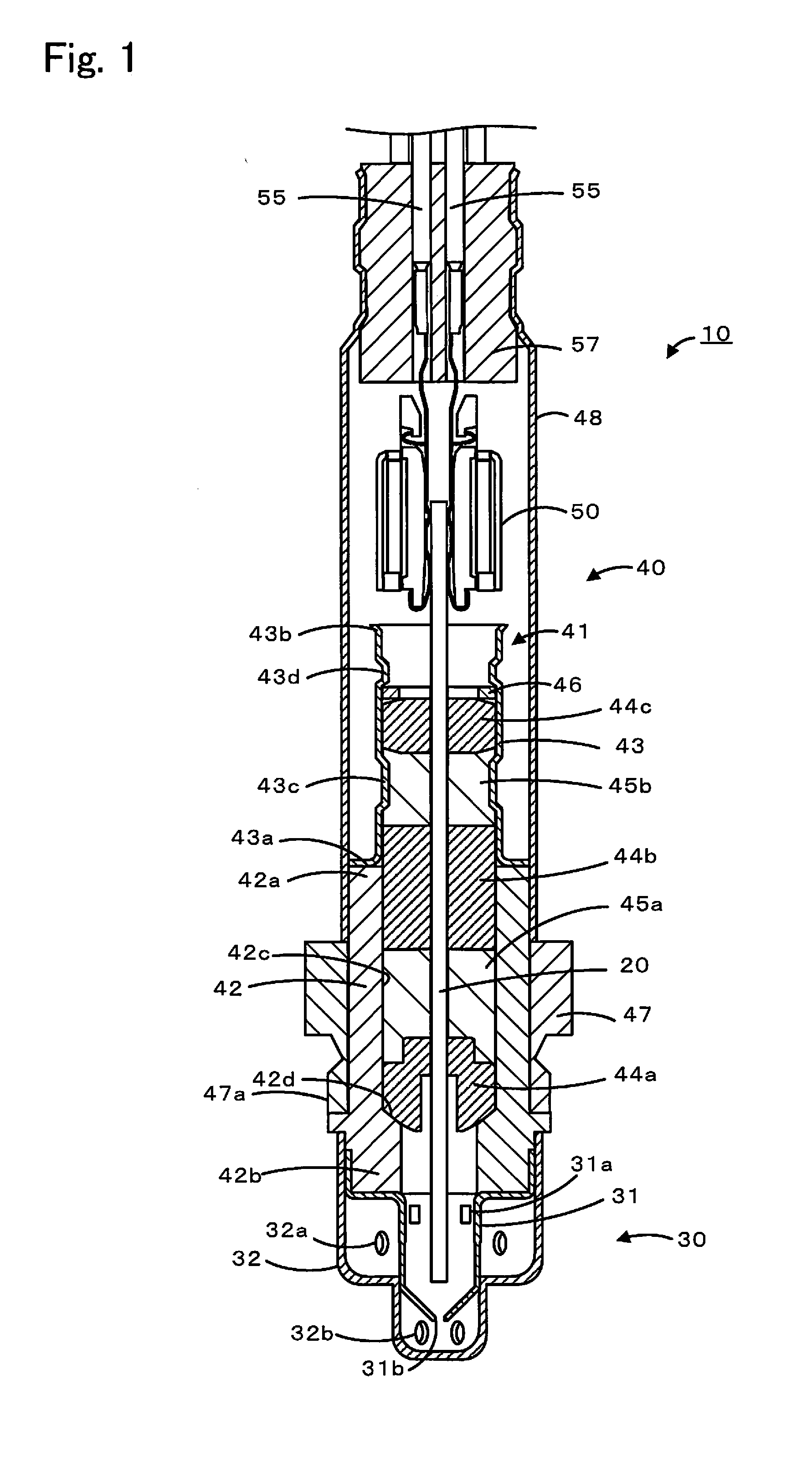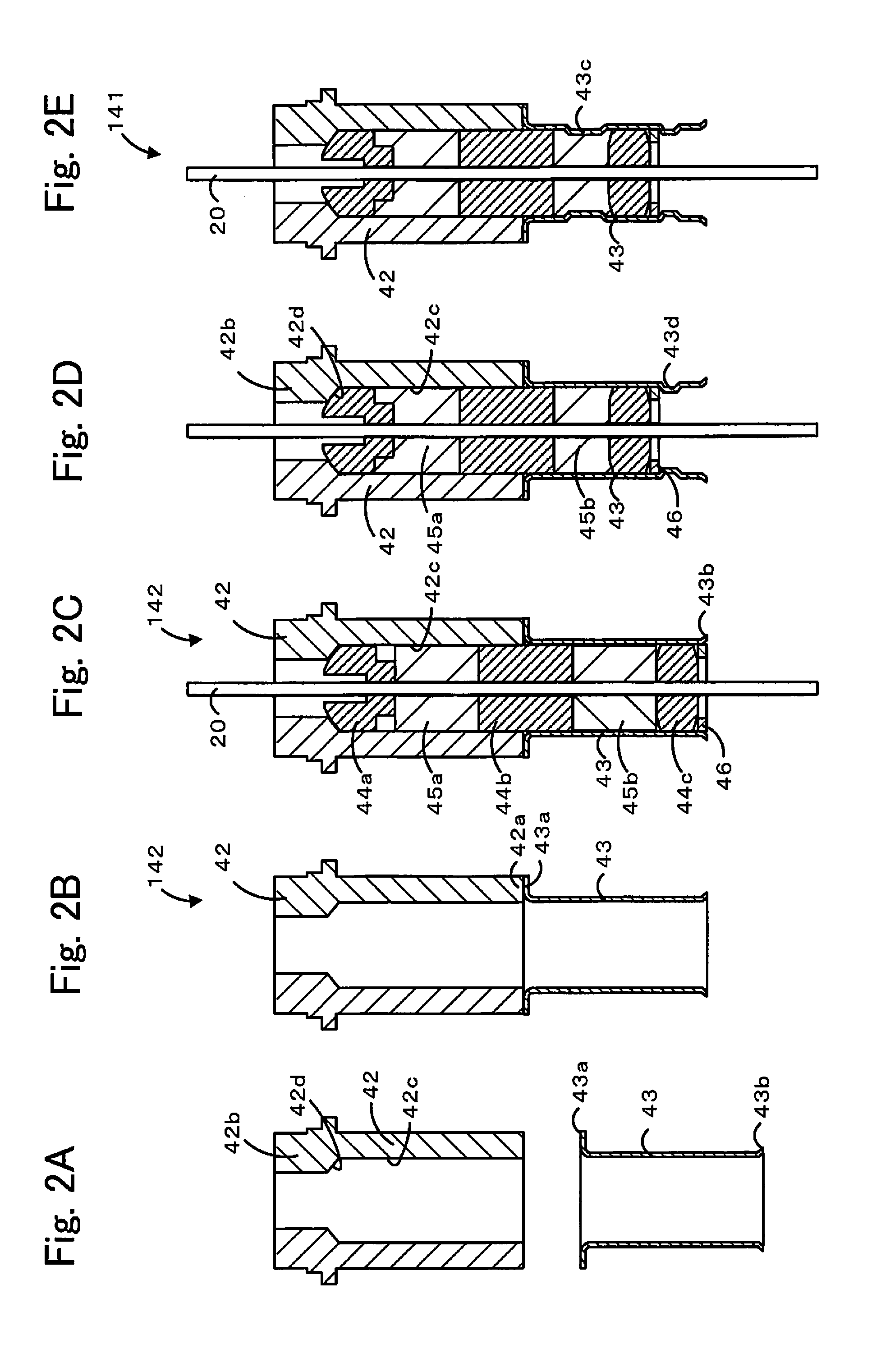Gas sensor
a technology of gas sensor and inner tube, which is applied in the field of gas sensor, can solve the problems of sensor element or tubular member breakage, insufficient gas tightness, and shorter axial length of the filled sealing member, and achieve the effect of gas tightness, easy spreadability, and gas tightness
- Summary
- Abstract
- Description
- Claims
- Application Information
AI Technical Summary
Benefits of technology
Problems solved by technology
Method used
Image
Examples
experimental examples 1 to 7
[0056]Experimental Examples 1 to 7 were each obtained, as a part of the gas sensor, by fabricating the primary assembly made up of the element enclosing member 341 and the sensor element 20 illustrated in FIG. 4, and by mounting the protective cover 30 and the nut 47, including the external threads 47a, to the primary assembly, thus fabricating the secondary assembly in the same manner as the above-described manufacturing method. Experimental Examples 1 to 7 had the same configuration except that the arithmetic average roughness Ra of the inner peripheral surface 42c was different among them. More specifically, the main hardware 42 and the inner tube 243 were made of stainless steel and formed by forging. The inner peripheral surface 42c of the main hardware 42 had the inner diameter of 9 mm and the axial length of 20.7 mm. The thicker wall portion 42b had the inner diameter of 5.9 mm and the axial length of 6.4 mm. The axial length of the inner tube 43 was 4.3 mm, and the inner dia...
experimental examples 8 to 28
[0057]Experimental Examples 8 to 14 were obtained by fabricating similar secondary assemblies to those in Experimental Examples 1 to 7 except that the sealing load applied to the powder compact 345a was changed to 1000 kgf. Experimental Examples 15 to 21 were obtained by fabricating similar secondary assemblies to those in Experimental Examples 1 to 7 except that the sealing load applied to the powder compact 345a was changed to 1400 kgf. Experimental Examples 22 to 28 were obtained by fabricating similar secondary assemblies to those in Experimental Examples 1 to 7 except that the sealing load applied to the powder compact 345a was changed to 2000 kgf. The amount of talc powder used in each of those Experimental Examples was 2.2 g.
[0058][Evaluation Tests]
[0059]The gas tightness effectuated by the powder compact 345a between each of the main hardware 42 and the inner tube 43 and the sensor element 20 was tested for the secondary assemblies of Experimental Examples 1 to 28. FIG. 6 is...
PUM
| Property | Measurement | Unit |
|---|---|---|
| arithmetic average roughness | aaaaa | aaaaa |
| arithmetic average roughness | aaaaa | aaaaa |
| particle diameter | aaaaa | aaaaa |
Abstract
Description
Claims
Application Information
 Login to View More
Login to View More - R&D
- Intellectual Property
- Life Sciences
- Materials
- Tech Scout
- Unparalleled Data Quality
- Higher Quality Content
- 60% Fewer Hallucinations
Browse by: Latest US Patents, China's latest patents, Technical Efficacy Thesaurus, Application Domain, Technology Topic, Popular Technical Reports.
© 2025 PatSnap. All rights reserved.Legal|Privacy policy|Modern Slavery Act Transparency Statement|Sitemap|About US| Contact US: help@patsnap.com



